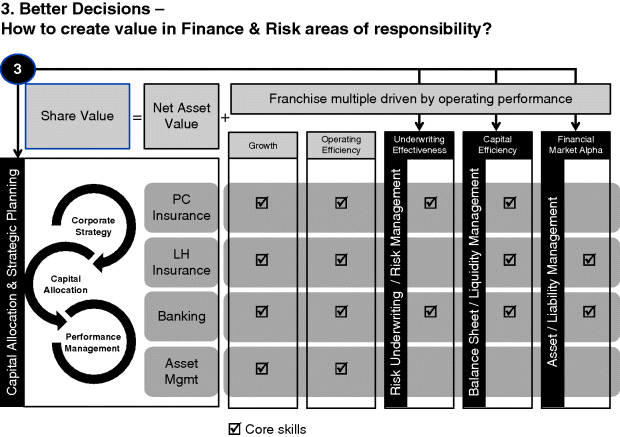Chapter 20Risk Management
Financial services firms create value for shareholders and clients by intermediating, underwriting and advising on risk. It should not come as any surprise therefore that a large part of a bank's or insurer's performance ultimately depends on how well it manages risk. As illustrated in Figure 20.1, risk underwriting is a core skill for making loans and issuing insurance policies.

Figure 20.1 Better decisions – how to create value in the finance and risk areas of responsibility
However, risk underwriting has to be seen in the context of a broader Enterprise Risk Management (ERM) framework, beginning with the basic activities of risk identification, evaluation, underwriting, monitoring and management, all governed by a well-defined risk strategy and appetite. This chapter outlines the most important aspects of a comprehensive ERM framework for banks and insurers, going into greater detail in the area of risk underwriting.
Enterprise Risk Management
CFOs and CROs need to ask, and answer, the “right” questions – questions which have the potential to substantially influence the value of their firm.
In terms of risk management, the “right” questions can be phrased as a hierarchy similar in spirit to Maslow's (1943)1 hierarchy of needs: only by sufficiently satisfying the lower levels can a CRO begin to address those needs at a higher level. However, whereas ...
Get Value and Capital Management: A Handbook for the Finance and Risk Functions of Financial Institutions now with the O’Reilly learning platform.
O’Reilly members experience books, live events, courses curated by job role, and more from O’Reilly and nearly 200 top publishers.

